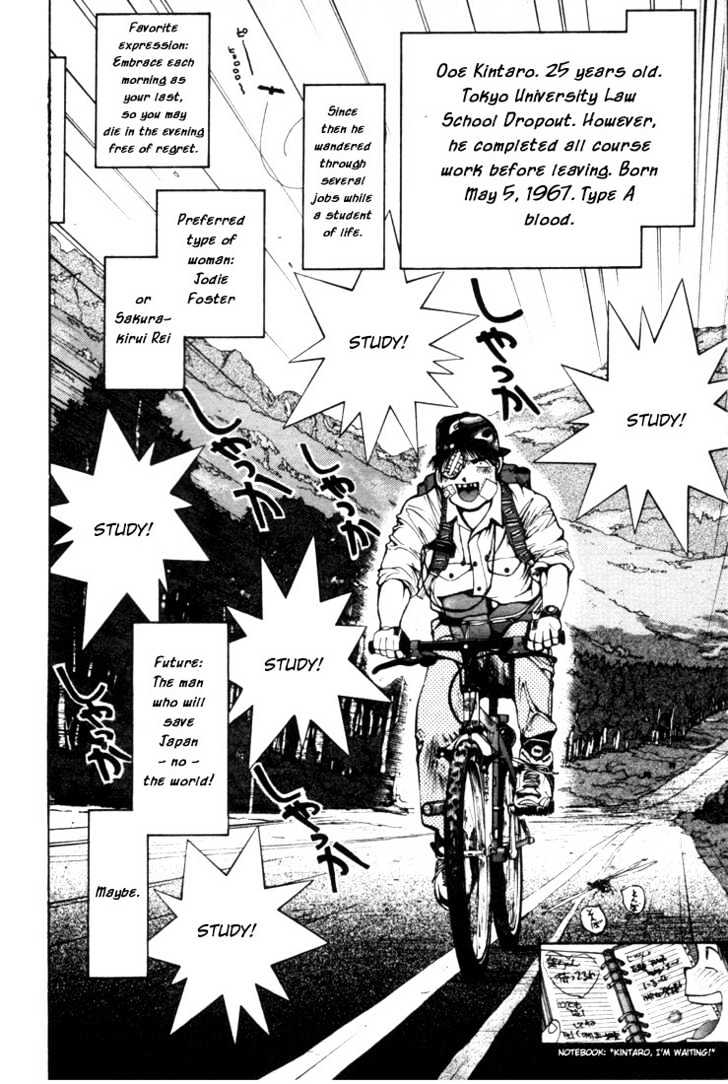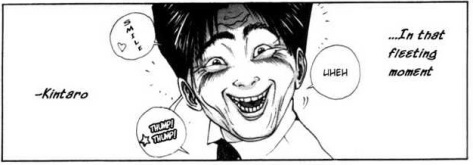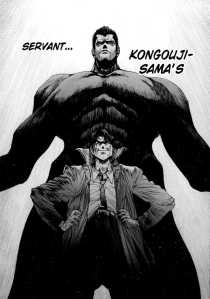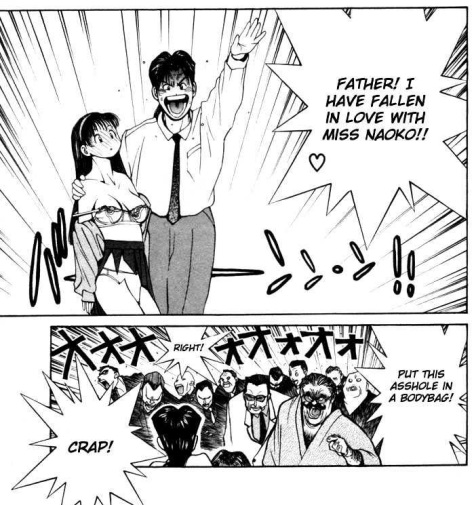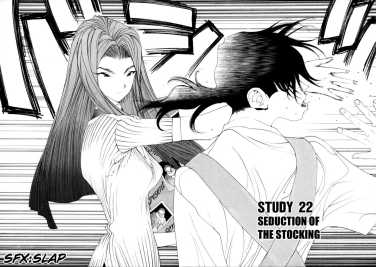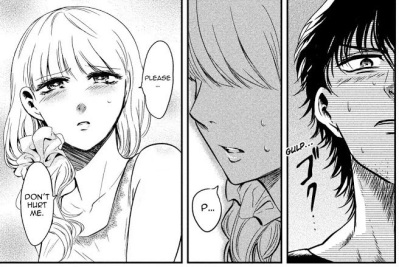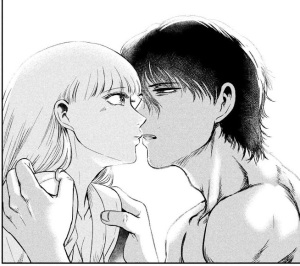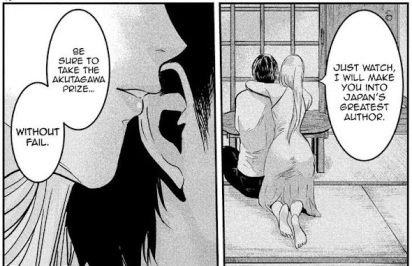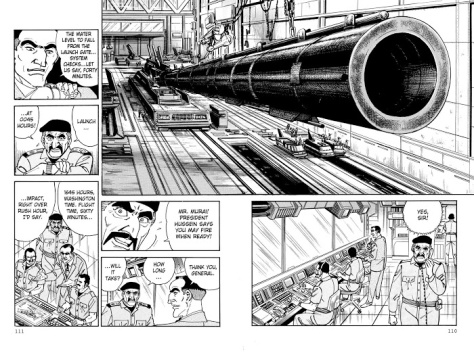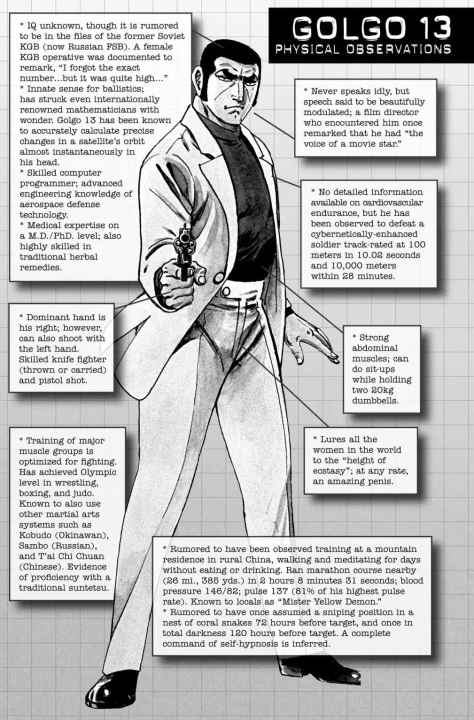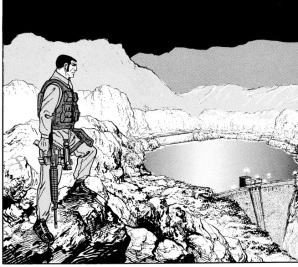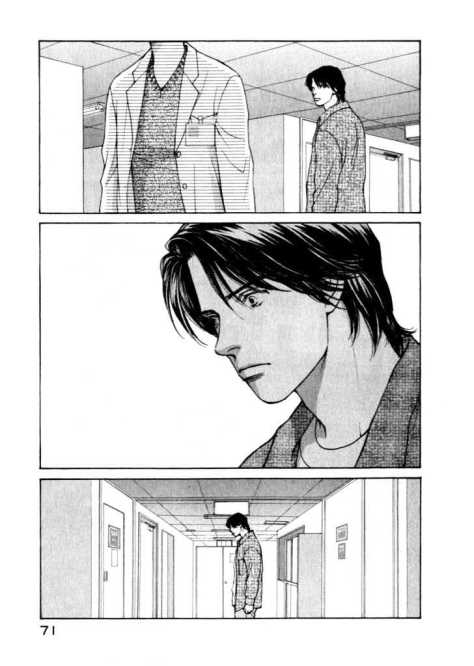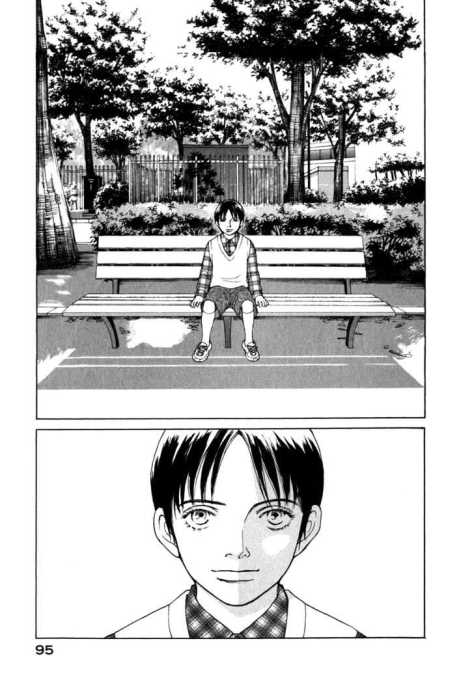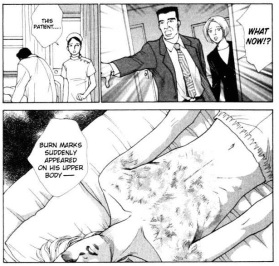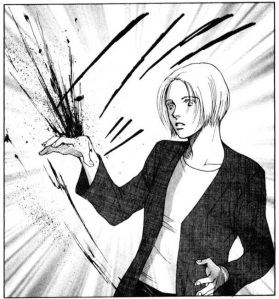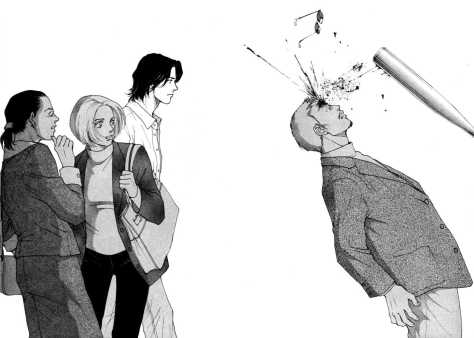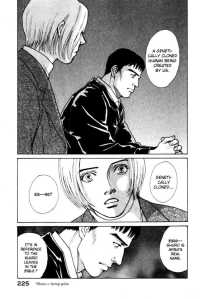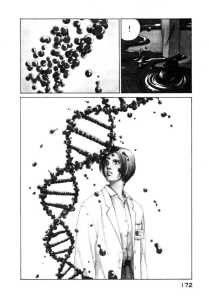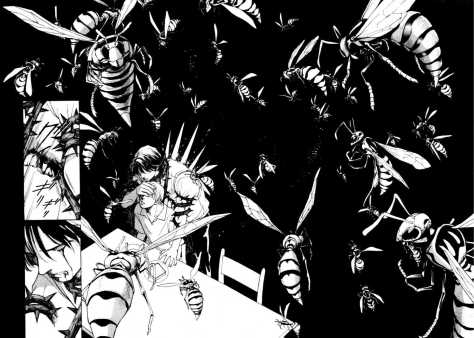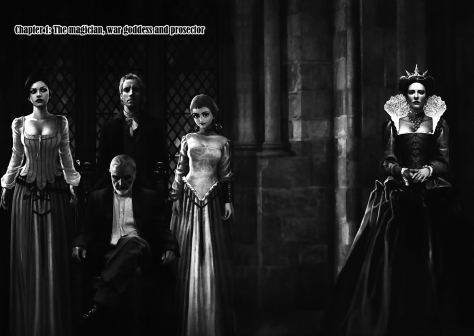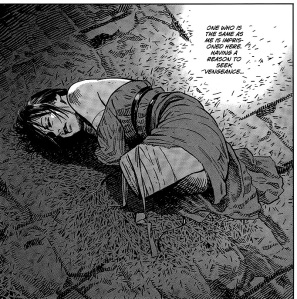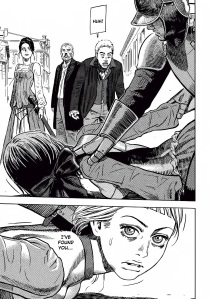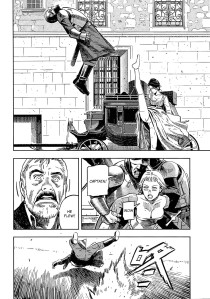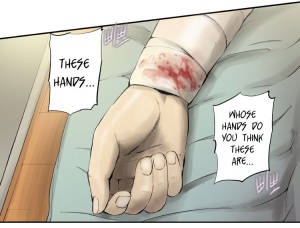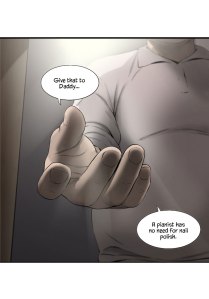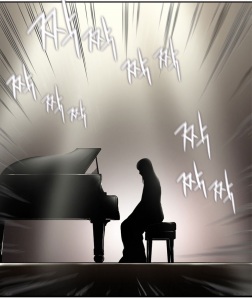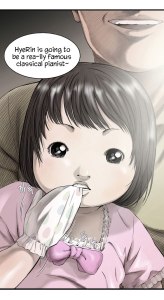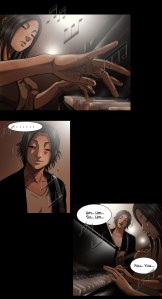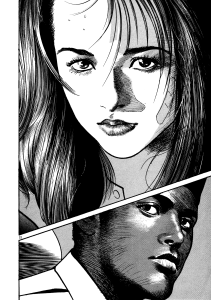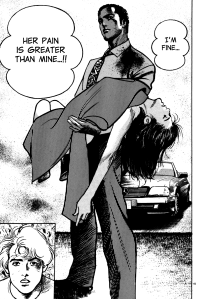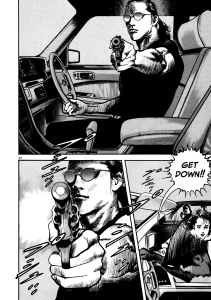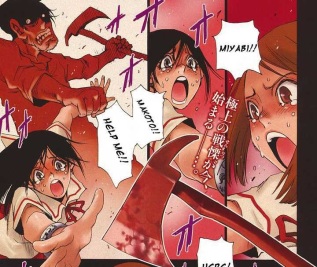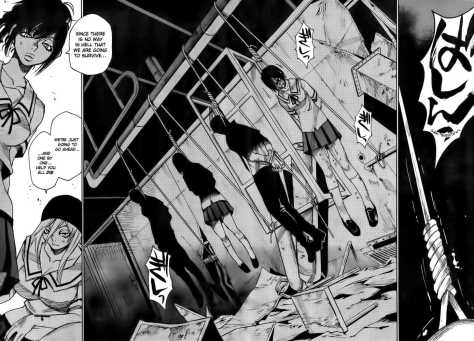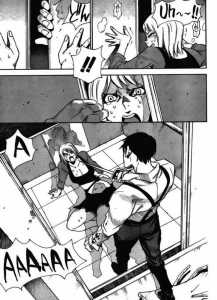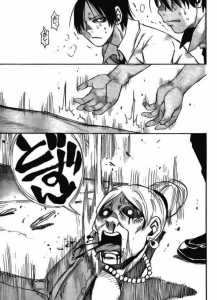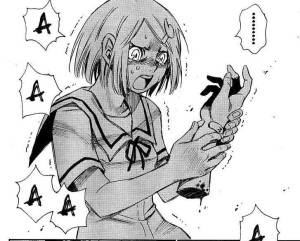Oldman
Chinese Title: OLDMAN
Genre: Action Fantasy
Length: 22 chapters (4 volume)
My first impression of Oldman: “Is that Sean Connery?” “Is that Cate Blanchett as the queen on the key art?” “Is that Rhys Ifans as the doctor?” Apparently so. The author Sheng Chang uses real actors for reference with his characters, as if casting them in a film (and in the hopes that someone like the late Sean Connery would act in an adaptation).
Oldman is a medieval action manga with one fantasy element. The titular Oldman, imprisoned son of the queen, breaks out of jail to enact revenge on his ageless mother. On the way out, he grabs Rebecca, a once legendary warrior doomed to rot in her cell with both arms and legs severed from her body. They join a few other characters on the quest, including a doctor to construct a new set of limbs for Rebecca.
The opening volume of Oldman is excellent and shows so much promise. The conflict inherent between Oldman and the queen is obvious, but the questions garner much intrigue. How is such an old man the son of a young queen? What the hell happened to Rebecca? Who is the other girl with amnesia yet friends with Oldman? Can he do real magic or is it all trickery? Volume 1 made me binge this series in a single sitting.
Sadly, it doesn’t hold up through to the end. The middle section flakes on the detail as it sets up a decently complex two-thread plot, with the final act rushing to the finish line. There is a great story here that needs at least 10 volumes to do it justice. I can see this making for a good 26-episode anime should one flesh out the skeleton presented.
The mix of action and surprising amount of comedy layered with mystery succeeds well. However, the action physics need work. Take Rebecca’s mannequin limbs. They have built in enhancements, including explosives that create rocket-like punches. Except, these explosives would shatter her arms to splinters before anything else. It doesn’t makes sense. Also, taking a few lessons from Shadiversity on the effectiveness of arrows and full plate armour wouldn’t go amiss. Just because you use Hollywood actors for reference, doesn’t mean you should use outdated Hollywood medieval action as well.
I do wish Oldman had more time.
Overall Quality – Medium
Result: Give me a fleshed out remake.
* * * * *
Diamond Dust
Korean Title: Diamond Dust
Genre: Drama Music Romance
Length: 40 chapters (3 volumes)
Diamond Dust is a manhwa webtoon about a piano prodigy with strict parents and the terminally ill underground musician she falls in love with. If you are imagining the stereotypical strict Asian parents forcing their child down one career path from birth, then you’d be right. And if you imagine the romance is the usual misery lit, then you’d also be right. In essence, Diamond Dust is predictable. Yet, the merging of the two story types makes it more engaging than seeing either apart.
The piano career side features a father that resents everyone in his family without prodigious talent (the mother is just as bad). He forces the girl to practice piano 12 hours a day, bans socialising, and freaks out at the slightest action that could endanger her golden hands. The parents are truly nasty, but in that believable sense where you see they believe that they’re doing what’s best for their daughter. She does find massive success until she (obviously) has a breakdown after one too many high-pressure performances. Her fingers cramp up. She cannot play.
Warmth and comfort arrive in the form of a young musician trying to make it in a struggling band. A tumour is pressing into his brain, affecting his memory and ability to concentrate. The romance follows all the beats you expect. She rebels against the parents, his conditions strains the relationship, the parents try to keep him away from her, and so on. Diamond Dust does this well. Don’t expect any surprises.
One last thing I want to note is the design of the two main characters. They suffer from same-face syndrome (until the cancer progresses), which makes them look like siblings – not something you want from a romantic couple. If not for the different hairstyles, you wouldn’t be able to tell them apart in close ups.
Overall Quality – Medium
Result: Not bad. Wasn’t disappointed.
* * * * *
Kyouko
Japanese Title: Kyouko
Genre: Action Drama
Length: 14 chapters (2 volumes)
If you know anything about B movies (low budget, non-artsy films), you will be familiar with the hack director’s number one plot device for conflict and motivating the protagonist – rape. There is so much rape. More specifically, the filmmakers don’t understand the crime and no one cares after it happens. They use it like a villain randomly shooting a puppy to show how evil he is.
Kyouko (aka The Accident) is one such example. The protagonist, a woman, is gang raped in the first chapter as her boyfriend watches on, helpless. An American soldier happens to pass by and rescues her. Rather than show any signs of trauma at the experience, she dumps the boyfriend and is ready to jump this American’s bones right away. Then someone assassinates him. Her quest for revenge turns into action schlock with dumb conspiracies.
Another manga I read after Kyouko that fit the mould is Mephisto. That protagonist is a rapist, serial killer, and bathes in the intestines of children and we are supposed to sympathise with him? Ha!
Overall Quality – Very Low
Result: Truly a B movie in manga form.
* * * * *
Cradle of Monsters
Japanese Title: Mouryou no Yurikago
Genre: Action Horror
Length: 41 chapters (6 volumes)
Continuing with the B movie inspirations, we have Cradle of Monsters, a horror manga that blends The Poseidon Adventure with The Walking Dead and a low budget. After a cruise ship capsizes in the middle of the ocean, everything goes to hell as most of the passengers turn into zombies and many of the remaining living become murderers. Amongst this chaos are a few survivors, most of them teenagers from the same school on a trip.
This is not a good manga. Quickly you will notice how the fan service takes priority and how irritating it is. While people are dying, the primary concern of the artist is to have a panty shot or for the writing to mention how a character isn’t wearing panties. Half of the deaths mention this, I swear. The ultimate fan service in Cradle of Monsters (or so the author believes) is the frequent golden showers before or at the moment of death. This guy has a serious fetish.
Should you look past the fan service, there isn’t much on offer anyway. To say the characters are one-dimensional would be to give them too many dimensions. Everyone in this story is evil except for maybe three people. I find it so dull when a disaster story makes everyone incomprehensibly evil. Apart from being unrealistic, it’s also predictable. Furthermore, there are so few survivors. It isn’t as if this situation has been raging for months while the infection spreads. Maybe, what, a few hours have passed since the incident and only 20 or so people are alive out of everyone on a massive cruise liner? The author is clearly lazy.
This story wasn’t planned out either. Characters will teleport around the ship for dramatic ambushes, surprise reveals, and last second rescues. It makes no sense how they catch up or get ahead of the main group when navigation is so limited. Again, lazy.
Character backstories also suffer under the lack of forethought. Many characters have a backstory that suddenly reveals a talent they just so happen to need to get out of a situation. “I never mentioned this before, but in the past I studied this thing, so I can use it to clear this obstacle for us.” I believe they call this an “ass pull” in the business. Happens over and over.
And finally, this horror manga isn’t scary. The art is quite bad, so turns supposed frightening moments into comedy, which combined with the above-mentioned issues makes for a yawn-inducing experience.
Overall Quality – Low
Result: That’s going to be a no from me on the golden showers.
(Request reviews here. Find out more about the rating system here.)

